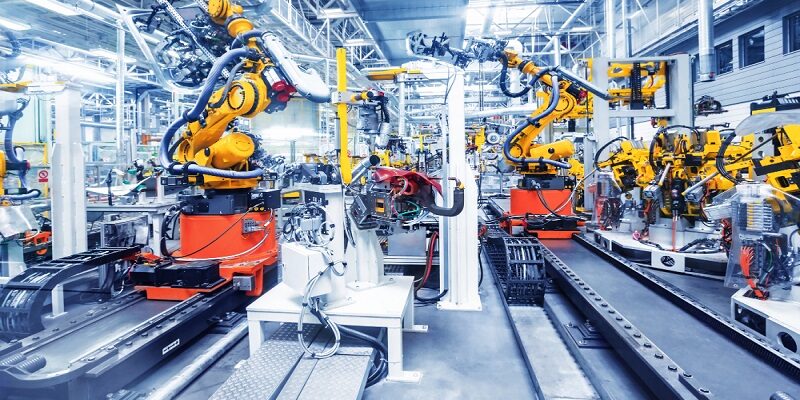Zebra Technologies Corporation announced the findings of its 2024 Manufacturing Vision Study. The study showed that globally, 61% of manufacturers expect AI to drive growth by 2029, up from 41% in 2024. In APAC, including India, 68% of manufacturers expect AI to drive growth by 2029, increasing from 46% in 2024. This surge in AI adoption, combined with 92% global and 87% of APAC survey respondents prioritising digital transformation, underscores manufacturers’ intent to improve data management and leverage new technologies that enhance visibility and quality throughout the manufacturing process.
While digital transformation is a priority for manufacturers, around 30% to 40% of global and APAC, including India, respondents recognise achieving it is fraught with obstacles, including the cost and availability of labor, scaling technology solutions, and the convergence of information technology and operational technology (IT/OT).
Visibility is the first step to transformation – through adopting AI and other new technologies. This enables manufacturers to leverage data more effectively to identify, react and prioritise problems and projects to deliver incremental efficiencies across the manufacturing process, ensuring the greatest impact upfront.
“Manufacturers struggle with using their data effectively so they recognise they must adopt AI and other digital technology solutions to create an agile, efficient manufacturing environment”, said Subramaniam Thiruppathi, Director of Sales for India and Sub-Continent, Zebra Technologies. “As India and APAC manufacturers gear up for AI-driven growth, our focus on leveraging advanced technologies and optimising data utilisation will be pivotal. With India’s manufacturing sector set to hit US$ 1 trillion by 2025-26, our latest innovations, including the FXR90 ultra-rugged fixed RFID readers and ZS300 electronic sensors, will empower ecosystem players to significantly enhance operational efficiency and data-driven decision-making”.
Zebra empowers manufacturers with strategic insights and technologies to advance the connected factory by boosting visibility, optimising quality, and augmenting their workforces.
Focusing on closing visibility gaps
Although manufacturers say digital transformation is a strategic priority, achieving a fully connected factory remains elusive. Visibility is key to optimising efficiency, productivity, and quality on the plant floor, yet a large visibility gap exists. Only 16% of manufacturing leaders globally report they have real-time, work-in-progress (WIP) monitoring across the entire manufacturing process, while this is true for more of APAC manufacturing leaders, at 25%.
While nearly six in 10 (57% globally, 63% in APAC, including India) manufacturing leaders expect to increase visibility across production and throughout the supply chain by 2029, around one-third of leaders (33% globally, 38% in APAC, including India) say getting IT and OT to agree on where to invest is a key barrier to digital transformation. Adding to these obstacles, 86% of global manufacturing leaders agree they are struggling to keep up with the pace of technological innovation and to securely integrate devices, sensors, and technologies throughout their facilities and supply chain, with 82% of APAC manufacturing leaders in agreement. Enterprises can use Zebra solutions to put their data to work, allowing for higher levels of security and manageability, as new analytics elevate the performance of their business.
Augmenting the workforce, elevating value and efficiency
Zebra’s study found manufacturers are shifting their growth strategies by integrating and augmenting workers with AI and other technologies to transform manufacturing and build a skilled workforce over the next five years. Nearly three-quarters (73%) of global manufacturing leaders plan to reskill labor to enhance data and technology usage skills, as seven in 10 expect to augment workers with mobility-enabling technology. These sentiments were shared by 76% and 75% of APAC manufacturing leaders respectively.
The technology tools being implemented by manufacturing leaders include tablets (51% globally, 52% in APAC, including India), mobile computers (55% globally, 53% in APAC, including India), and workforce management software (56% globally, 62% in APAC, including India). In addition, six in 10 of manufacturing leaders (61% globally, 65% in APAC, including India) plan to leverage wearable mobile computers to augment their evolving workforce.
Manufacturing leaders across the C-Suite, Information Technology (IT), and Operational Technology (OT) understand how labor initiatives must extend beyond improving worker efficiency and productivity with technology. Six in 10 of global and APAC leaders rank ongoing development, retraining/upskilling, and career path development to attract future talent as a high priority for their organisations.
Advancing automation to optimise quality
Overall, the quest for quality has intensified as manufacturers across segments must do more with fewer resources. According to the survey, manufacturing leaders say today’s most significant quality management issues are real-time visibility (33% globally, 40% in APAC, including India), keeping up with new standards and regulations (29% globally, 30% in APAC, including India), integrating data (27% globally, 31% in APAC, including India), and maintaining traceability (27% globally and in APAC, including India).
Manufacturing leaders’ technology implementation plans will address these challenges. Over the next five years, many plan to implement robotics (65% globally, 72% in APAC, including India), machine vision (66% globally and in APAC), radio frequency identification (RFID) (66% globally, 72% in APAC, including India), and fixed industrial scanners (57% globally, 62% in APAC, including India). Most manufacturing leaders agree these automation solutions are driven by a variety of factors including the need to provide the workforce with high-value tasks (70% globally, 75% in APAC, including India), achieve service level agreements (69% globally, 70% in APAC), and add more flexibility to the plant floor (64% globally, 66% in APAC, including India).
Key regional findings
APAC
While only 30% of manufacturing leaders use machine vision across the plant floor in APAC, including India, 67% are implementing or planning to deploy this technology within the next five years.
EMEA
In Europe, reskilling labor to enhance data and technology usage skills is the top ranked workforce strategy for manufacturing leaders to drive growth today (46%) and in five years (71%).
Latin America
While only 24% of manufacturing leaders rely on track and trace technology in LATAM, 74% are implementing or plan to implement the technology in the next five years.
North America
In North America, 68% of manufacturing leaders rank deploying workforce development programs as their most important labor initiative.







